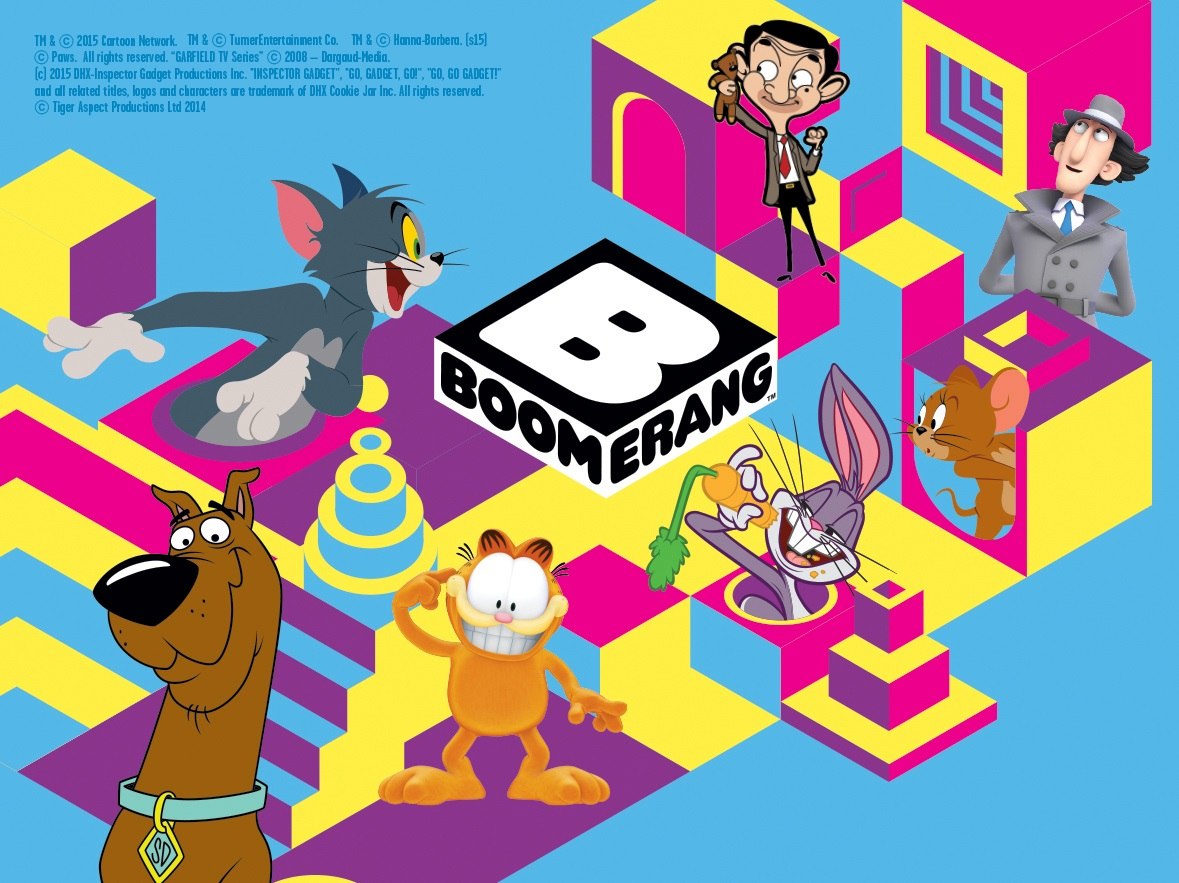

Sundays carried the "Boomeraction" theme, with animation featuring action and adventure such as Valley of the Dinosaurs, Super Friends, Space Ghost, Jonny Quest, and Battle of the Planets.

On Saturdays, a calendar year was featured with the cartoons of that year (ranging from approximately 1960 to 1996, one year per week in sequence). eastern and as of March 2007, it was known as Boomeroyalty. As of January 22, 2005, this banner became known as "monthly character of the month", and is now shown on weekends from 2 to 4 p.m. On Fridays, "monthly feature" cartoons were shown for the entire day one cartoon was featured for each Friday of a given month for 24 hours straight. Monday through Thursdays were just normal programming days, with a variety of half-hour and hour-long cartoon programs shown. The looping format had 8 hours of programming repeated three times a day. Up until 2013, the only advertising on the channel was for Boomerang or Cartoon Network programming.ĭuring its looping format, which lasted through January 17, 2005, program days began at 8 a.m. Notably, Boomerang did not carry product commercials. The channel initially carried a weekly looping programming format. Duck Dodgers, Cow and Chicken, The Jetsons, The Flintstones, What a Cartoon, Snorks, The Smurfs (Hanna-Barbera series), and Baby Looney Tunes were featured on the channel, although much of the Looney Tunes programming had gradually vanished. October 2nd and 3rd were the last times Looney Tunes officially aired on Cartoon Network. On October 2 and October 3, 2004, nearly four months after the re-launch of the Cartoon Network, the Boomerang block was replaced by Adult Swim with older reruns of classic anthologies like The Popeye Show, The Bob Clampett Show and ToonHeads, former Boomerang fare like The Gary Coleman Show and The Super Globetrotters. All of Cartoon Network's older programming (including Looney Tunes and shows from Hanna-Barbera migrated to Boomerang) would migrate to Boomerang upon its rebrand in 2004. Once the Boomerang channel launched, promos for it aired at the end of every show during the block, in an attempt to draw more viewers. For example, if Boomerang was showcasing the year 1969, the viewer would more than likely see an episode of Scooby-Doo, Where Are You! or Dastardly and Muttley in Their Flying Machines. Boomerang’s bug logo since April 1, 2000.īoomerang (both the programming block and the original spinoff channel that launched on April 1, 2000) followed a unique programming format-every week, cartoons produced during a certain year (and cartoons produced during years prior to that year) would be showcased. The Cartoon Network block continued to run under the new Boomerang channel branding until October 3, 2004.īoomerang's original logo. Turner Broadcasting System eventually converted Boomerang into a standalone cable channel that debuted on April 1, 2000.

Eventually, Boomerang was shortened by an hour, reducing it from four hours to three each weekend. The Saturday block moved to Saturday afternoons, then back to the early morning, and the Sunday block moved to Sunday evenings. It originally aired for four hours every weekend, but the block's start time had changed frequently. It was aimed towards the generation of baby boomers and was similar to the Vault Disney nostalgia block that would debut five years later on the Disney Channel. 5.11 Europe, Middle East, and Africa and Central and Eastern Europeīoomerang originated as a programming block on Cartoon Network that debuted on December 8, 1992.2 Availability on subscription television.In 2017, Boomerang launched an over-the-top subscription service focusing on classic cartoons. The network's drift towards modern content has also seen it carry reruns of current or recent Cartoon Network series. Since a rebranding in 2015 (which aimed to promote Boomerang as a "second flagship" brand alongside Cartoon Network), Boomerang began to air original programming, focusing primarily on reboots of popular legacy franchises such as Looney Tunes and Scooby-Doo. Cartoons and Hanna-Barbera productions, among many others), and eventually grew into its own separate channel devoted to such content in 2000. Discovery.īoomerang debuted as a programming block on Cartoon Network introduced in 1992, focusing on classic cartoons from the WB library (including Warner Bros. Boomerang (Alternatively referred to as Boomerang from Cartoon Network) is an American cable television network and streaming service owned by the Kids, Young Adults, and Classics division of Warner Bros Discovery, a subsidiary of Warner Bros.


 0 kommentar(er)
0 kommentar(er)
